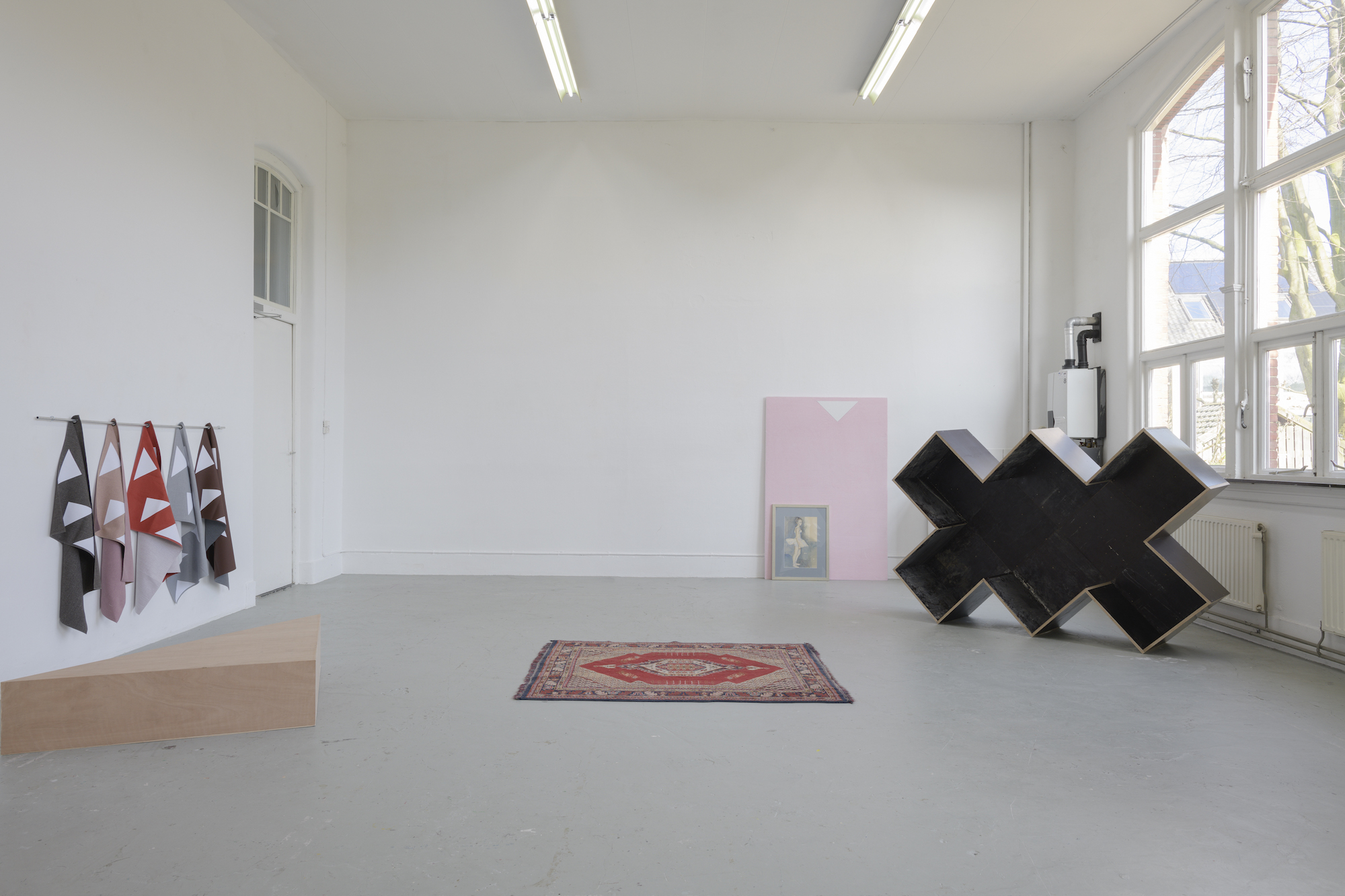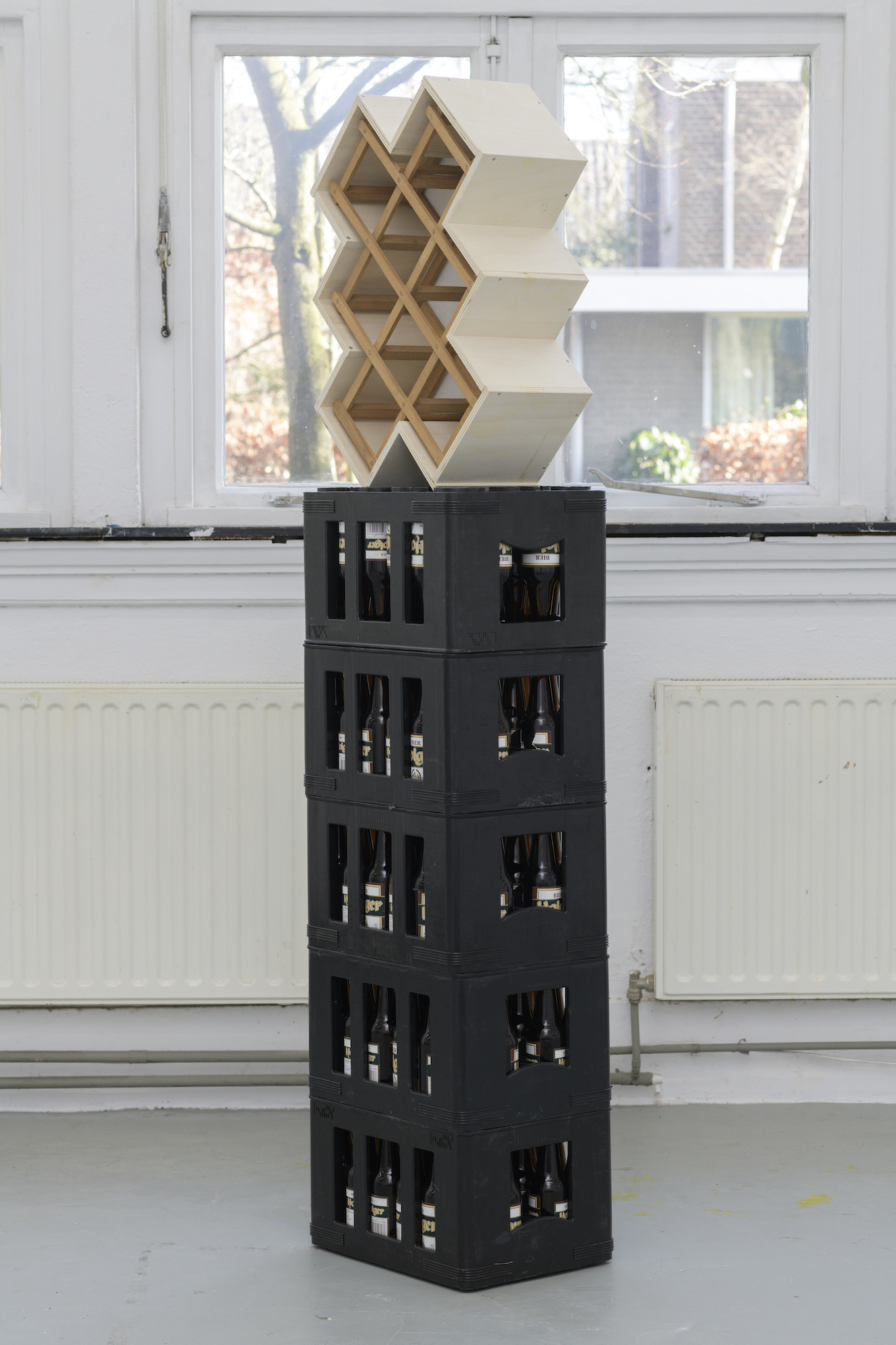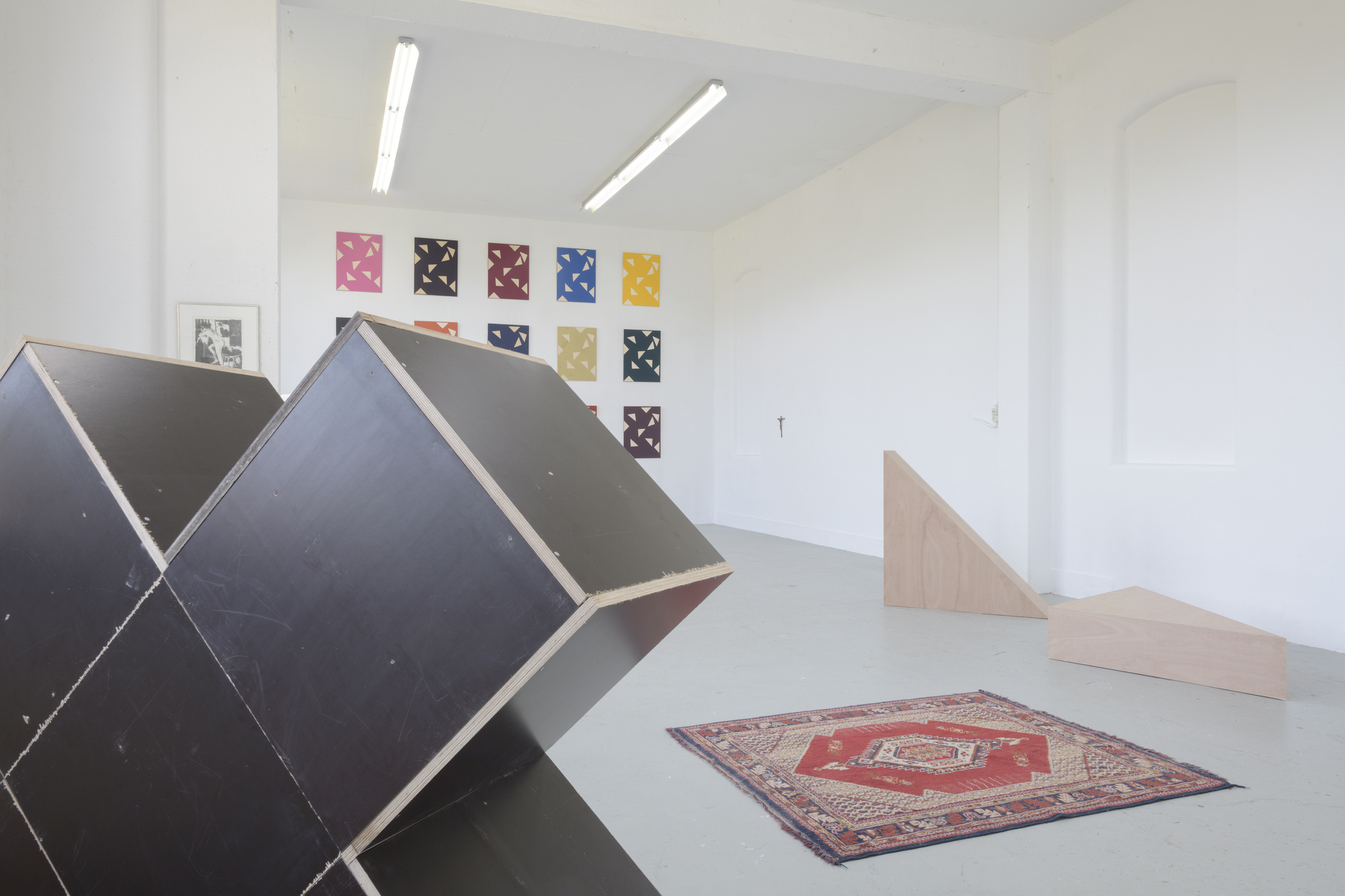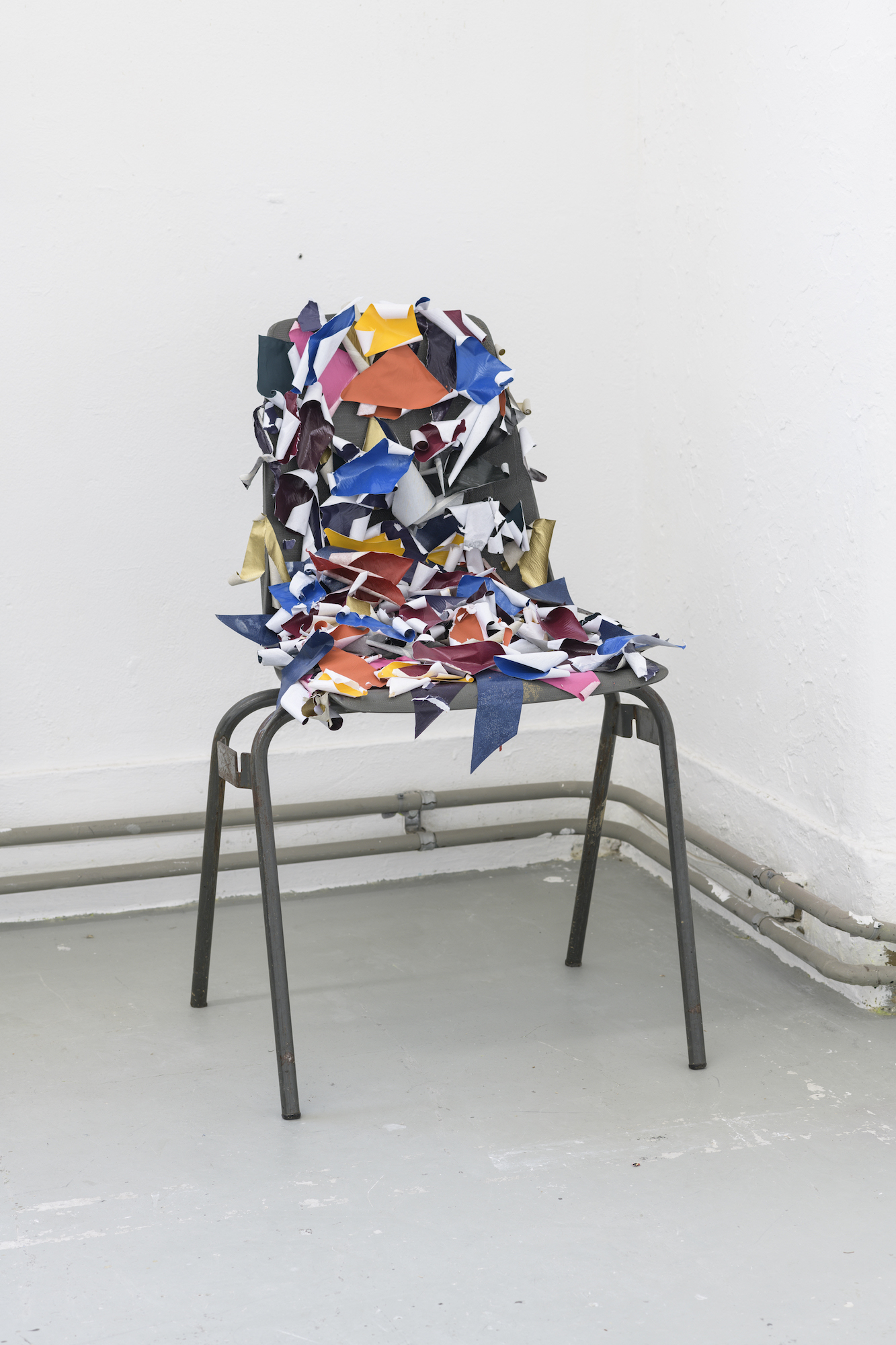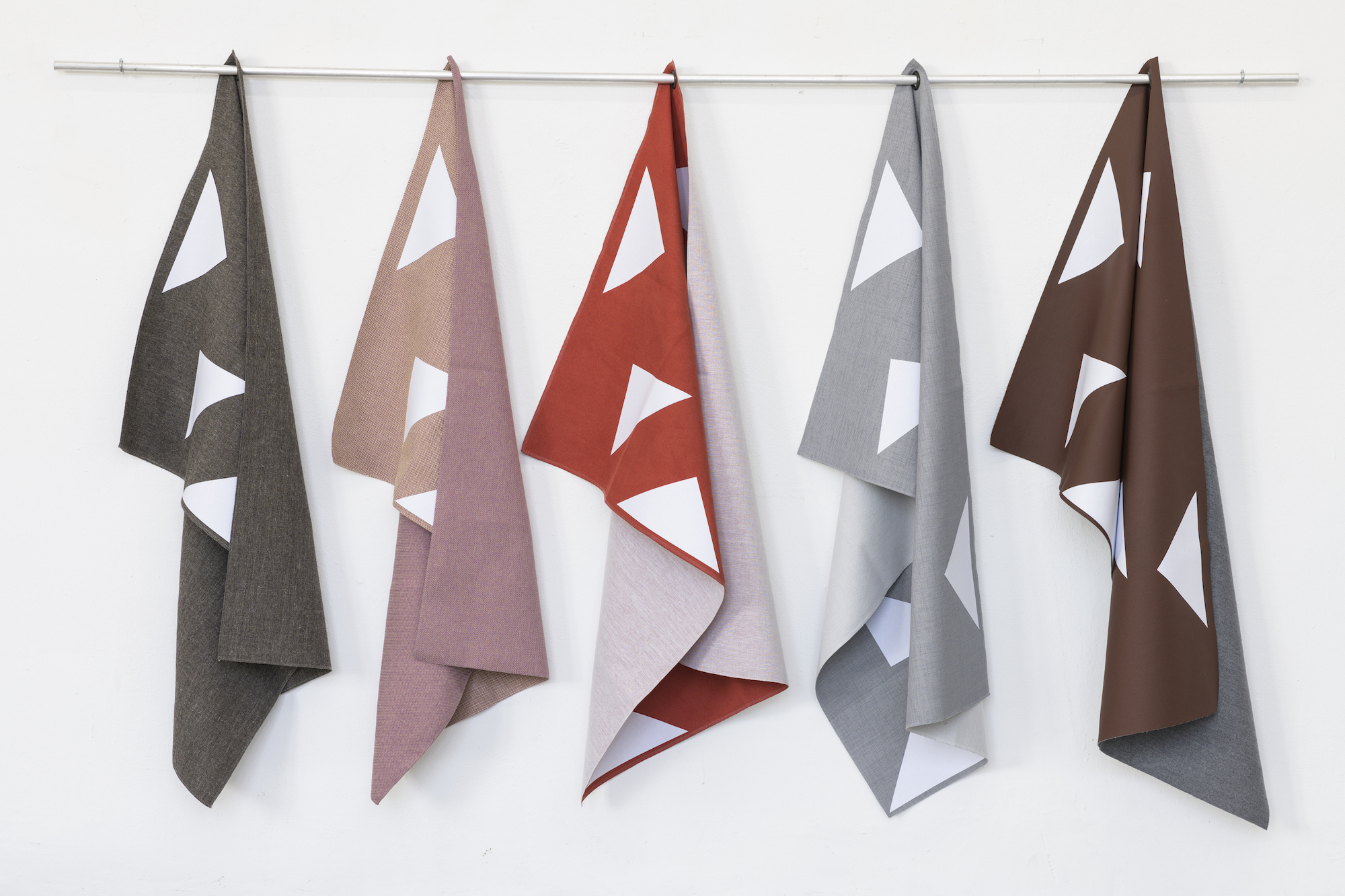
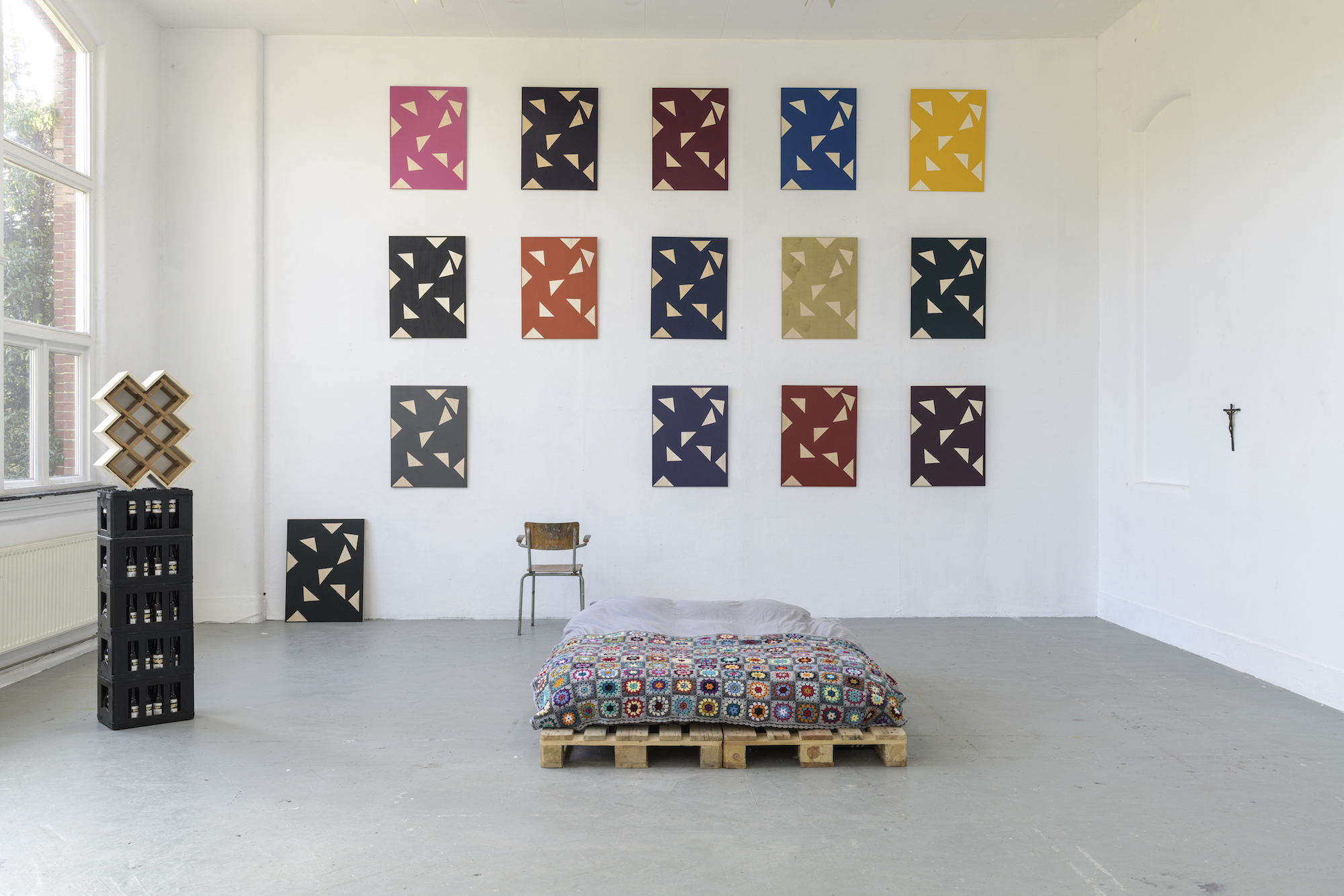









The casual remark by Kuipers about her having friends ‘outside the arts’, suddenly becomes meaningful. During my previous visit to the studio, there was a stack of beer crates with a painted wooden panel on it, tied together with a strap. The construction was build when Kuipers invited her friends over and thought she needed a table. For the occasion one of the painted panels hanging monumentally on the wall, was lifted from its pedestal for some airier entertainment. Such an intervention made me think of there being two types of artists: those with a social life and those that are married to their work. Through the light-footedness by which she fills the art space, without ever forgetting the viewer, I see Kuipers being one of the first category.The remark is hardly a statement for the half-abstract, half commonplace work she makes and yet it provides insight as to which decisions Kuipers makes in her work. While she’s making changes, she always takes the viewer into account, hoping they can still follow her reflections. I therefore suspect that her grandfather’s paintings, the chair, the bed, the carpet and the religious imagery are intended as support. They are residues of life and help the viewer to understand that Kuipers view on the matter isn’t always through the language of art.
Excerpt from text by Brenda Tempelaar.
Read the full text here.
The casual remark by Kuipers about her having friends ‘outside the arts’, suddenly becomes meaningful. During my previous visit to the studio, there was a stack of beer crates with a painted wooden panel on it, tied together with a strap. The construction was build when Kuipers invited her friends over and thought she needed a table. For the occasion one of the painted panels hanging monumentally on the wall, was lifted from its pedestal for some airier entertainment. Such an intervention made me think of there being two types of artists: those with a social life and those that are married to their work. Through the light-footedness by which she fills the art space, without ever forgetting the viewer, I see Kuipers being one of the first category.The remark is hardly a statement for the half-abstract, half commonplace work she makes and yet it provides insight as to which decisions Kuipers makes in her work. While she’s making changes, she always takes the viewer into account, hoping they can still follow her reflections. I therefore suspect that her grandfather’s paintings, the chair, the bed, the carpet and the religious imagery are intended as support. They are residues of life and help the viewer to understand that Kuipers view on the matter isn’t always through the language of art.
Excerpt from text by Brenda Tempelaar.
Read the full text here.
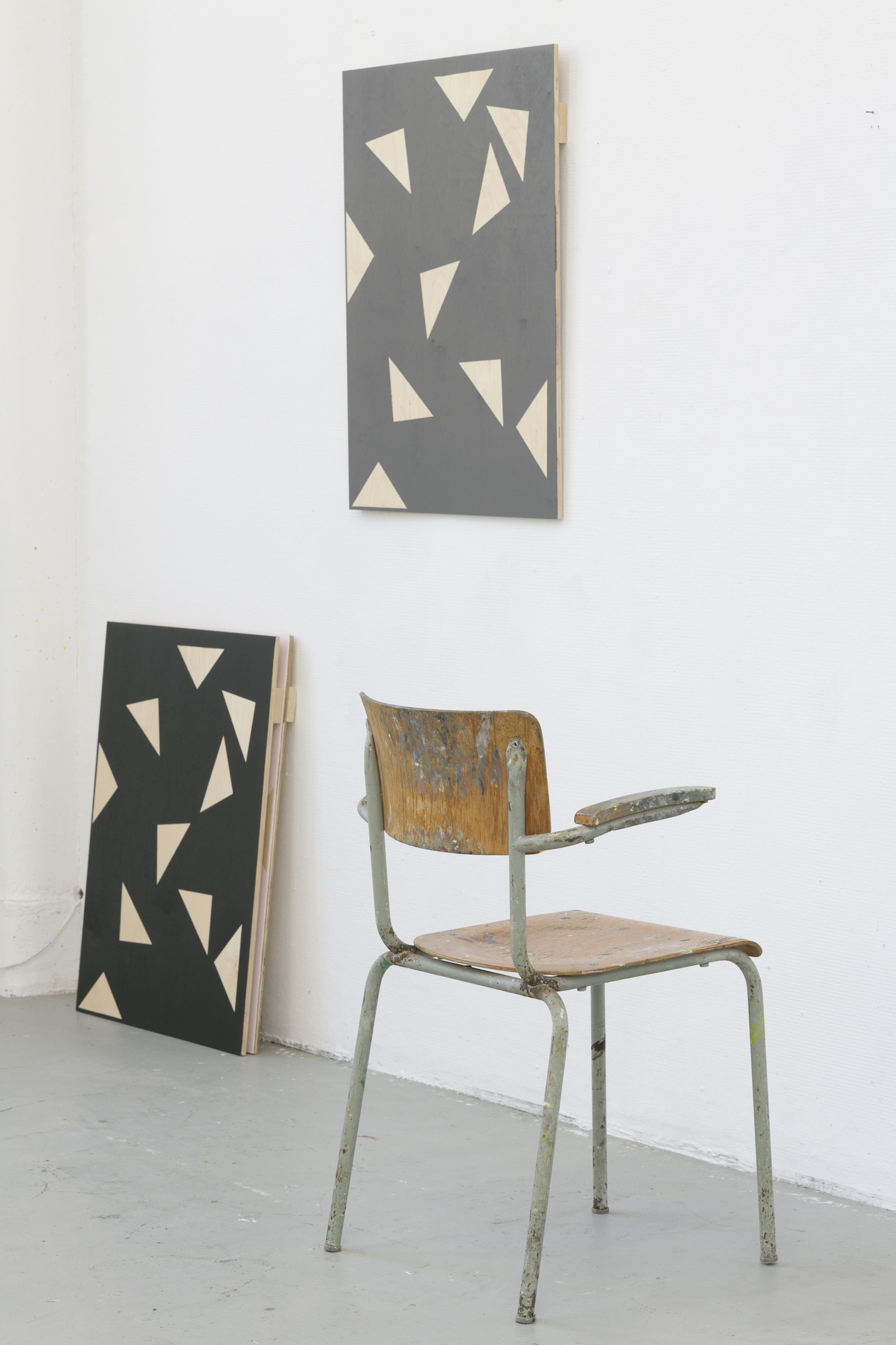
The casual remark by Kuipers about her having friends ‘outside the arts’, suddenly becomes meaningful. During my previous visit to the studio, there was a stack of beer crates with a painted wooden panel on it, tied together with a strap. The construction was build when Kuipers invited her friends over and thought she needed a table. For the occasion one of the painted panels hanging monumentally on the wall, was lifted from its pedestal for some airier entertainment. Such an intervention made me think of there being two types of artists: those with a social life and those that are married to their work. Through the light-footedness by which she fills the art space, without ever forgetting the viewer, I see Kuipers being one of the first category.The remark is hardly a statement for the half-abstract, half commonplace work she makes and yet it provides insight as to which decisions Kuipers makes in her work. While she’s making changes, she always takes the viewer into account, hoping they can still follow her reflections. I therefore suspect that her grandfather’s paintings, the chair, the bed, the carpet and the religious imagery are intended as support. They are residues of life and help the viewer to understand that Kuipers view on the matter isn’t always through the language of art.
Excerpt from text by Brenda Tempelaar.
Read the full text here.

The casual remark by Kuipers about her having friends ‘outside the arts’, suddenly becomes meaningful. During my previous visit to the studio, there was a stack of beer crates with a painted wooden panel on it, tied together with a strap. The construction was build when Kuipers invited her friends over and thought she needed a table. For the occasion one of the painted panels hanging monumentally on the wall, was lifted from its pedestal for some airier entertainment. Such an intervention made me think of there being two types of artists: those with a social life and those that are married to their work. Through the light-footedness by which she fills the art space, without ever forgetting the viewer, I see Kuipers being one of the first category.The remark is hardly a statement for the half-abstract, half commonplace work she makes and yet it provides insight as to which decisions Kuipers makes in her work. While she’s making changes, she always takes the viewer into account, hoping they can still follow her reflections. I therefore suspect that her grandfather’s paintings, the chair, the bed, the carpet and the religious imagery are intended as support. They are residues of life and help the viewer to understand that Kuipers view on the matter isn’t always through the language of art.
Excerpt from text by Brenda Tempelaar.
Read the full text here.
The casual remark by Kuipers about her having friends ‘outside the arts’, suddenly becomes meaningful. During my previous visit to the studio, there was a stack of beer crates with a painted wooden panel on it, tied together with a strap. The construction was build when Kuipers invited her friends over and thought she needed a table. For the occasion one of the painted panels hanging monumentally on the wall, was lifted from its pedestal for some airier entertainment. Such an intervention made me think of there being two types of artists: those with a social life and those that are married to their work. Through the light-footedness by which she fills the art space, without ever forgetting the viewer, I see Kuipers being one of the first category.The remark is hardly a statement for the half-abstract, half commonplace work she makes and yet it provides insight as to which decisions Kuipers makes in her work. While she’s making changes, she always takes the viewer into account, hoping they can still follow her reflections. I therefore suspect that her grandfather’s paintings, the chair, the bed, the carpet and the religious imagery are intended as support. They are residues of life and help the viewer to understand that Kuipers view on the matter isn’t always through the language of art.
Excerpt from text by Brenda Tempelaar.
Read the full text here.


The casual remark by Kuipers about her having friends ‘outside the arts’, suddenly becomes meaningful. During my previous visit to the studio, there was a stack of beer crates with a painted wooden panel on it, tied together with a strap. The construction was build when Kuipers invited her friends over and thought she needed a table. For the occasion one of the painted panels hanging monumentally on the wall, was lifted from its pedestal for some airier entertainment. Such an intervention made me think of there being two types of artists: those with a social life and those that are married to their work. Through the light-footedness by which she fills the art space, without ever forgetting the viewer, I see Kuipers being one of the first category.The remark is hardly a statement for the half-abstract, half commonplace work she makes and yet it provides insight as to which decisions Kuipers makes in her work. While she’s making changes, she always takes the viewer into account, hoping they can still follow her reflections. I therefore suspect that her grandfather’s paintings, the chair, the bed, the carpet and the religious imagery are intended as support. They are residues of life and help the viewer to understand that Kuipers view on the matter isn’t always through the language of art.
Excerpt from text by Brenda Tempelaar.
Read the full text here.






